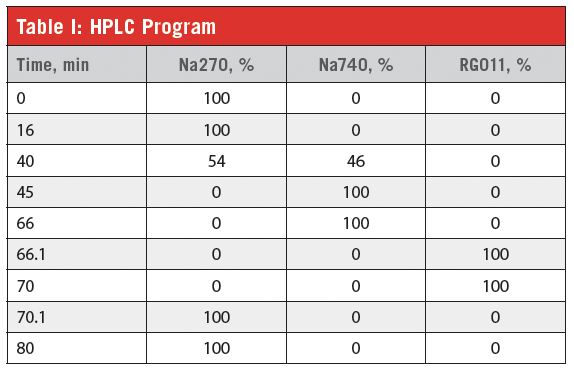An Analysis of Amino Acids in Oxidized and Unoxidized Feed Samples
Commission Regulation (EC) No 152-2009, published in TheOfficial Journal of European Union, laid down the methods of sampling and analysis for the official control of feed. The regulation describes methods of analysis to control the composition of feed materials and compound feed products. Establishing the amino acids profile is an important way to control quality and nutritional value of feeds. This regulation specifies HPLC with post-column derivatization with ninhydrin reagent as the method of analysis for total and free amino acids. Pickering Laboratories developed an analytical method to comply with all the chromatographic requirements of Commission Regulation (EC) No 152-2009. The same method is used to analyze oxidized and unoxidized feed samples.

Figure 1: Chromatogram of a standard solution of amino acids

Figure 2: Chromatogram of an oxidized feed sample

Figure 3: Chromatogram of a non-oxidized feed sample
Method


Table I: HPLC Program

Table 2: Column oven program

Pickering Laboratories
1280 Space Park Way, Mountain View, CA 94043
tel. (800) 654-3330, (650) 694-6700, fax: (650) 968-0749
Website: www.pickeringlabs.com

New Study Reviews Chromatography Methods for Flavonoid Analysis
April 21st 2025Flavonoids are widely used metabolites that carry out various functions in different industries, such as food and cosmetics. Detecting, separating, and quantifying them in fruit species can be a complicated process.
Analytical Challenges in Measuring Migration from Food Contact Materials
November 2nd 2015Food contact materials contain low molecular weight additives and processing aids which can migrate into foods leading to trace levels of contamination. Food safety is ensured through regulations, comprising compositional controls and migration limits, which present a significant analytical challenge to the food industry to ensure compliance and demonstrate due diligence. Of the various analytical approaches, LC-MS/MS has proved to be an essential tool in monitoring migration of target compounds into foods, and more sophisticated approaches such as LC-high resolution MS (Orbitrap) are being increasingly used for untargeted analysis to monitor non-intentionally added substances. This podcast will provide an overview to this area, illustrated with various applications showing current approaches being employed.

.png&w=3840&q=75)

.png&w=3840&q=75)



.png&w=3840&q=75)



.png&w=3840&q=75)













